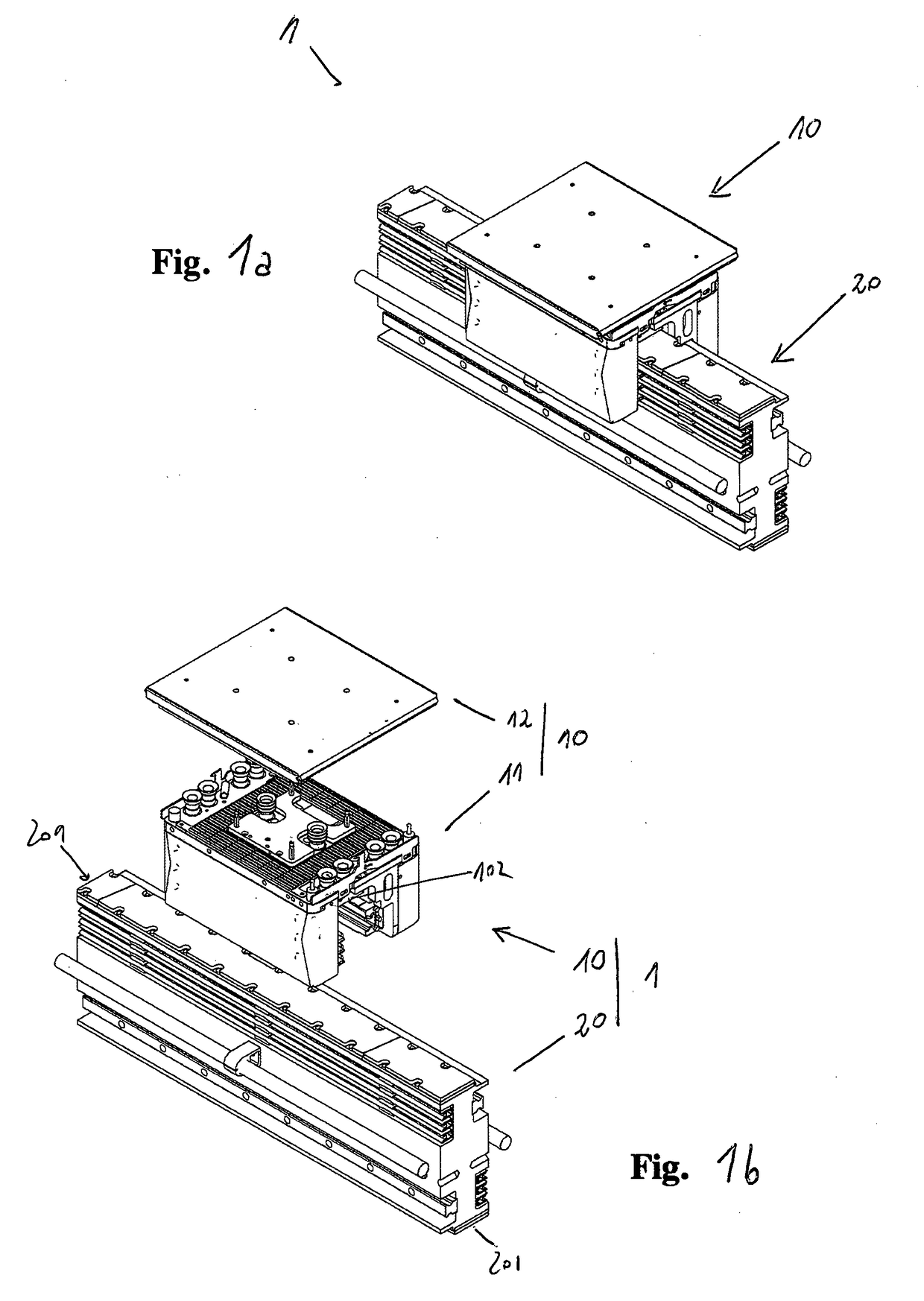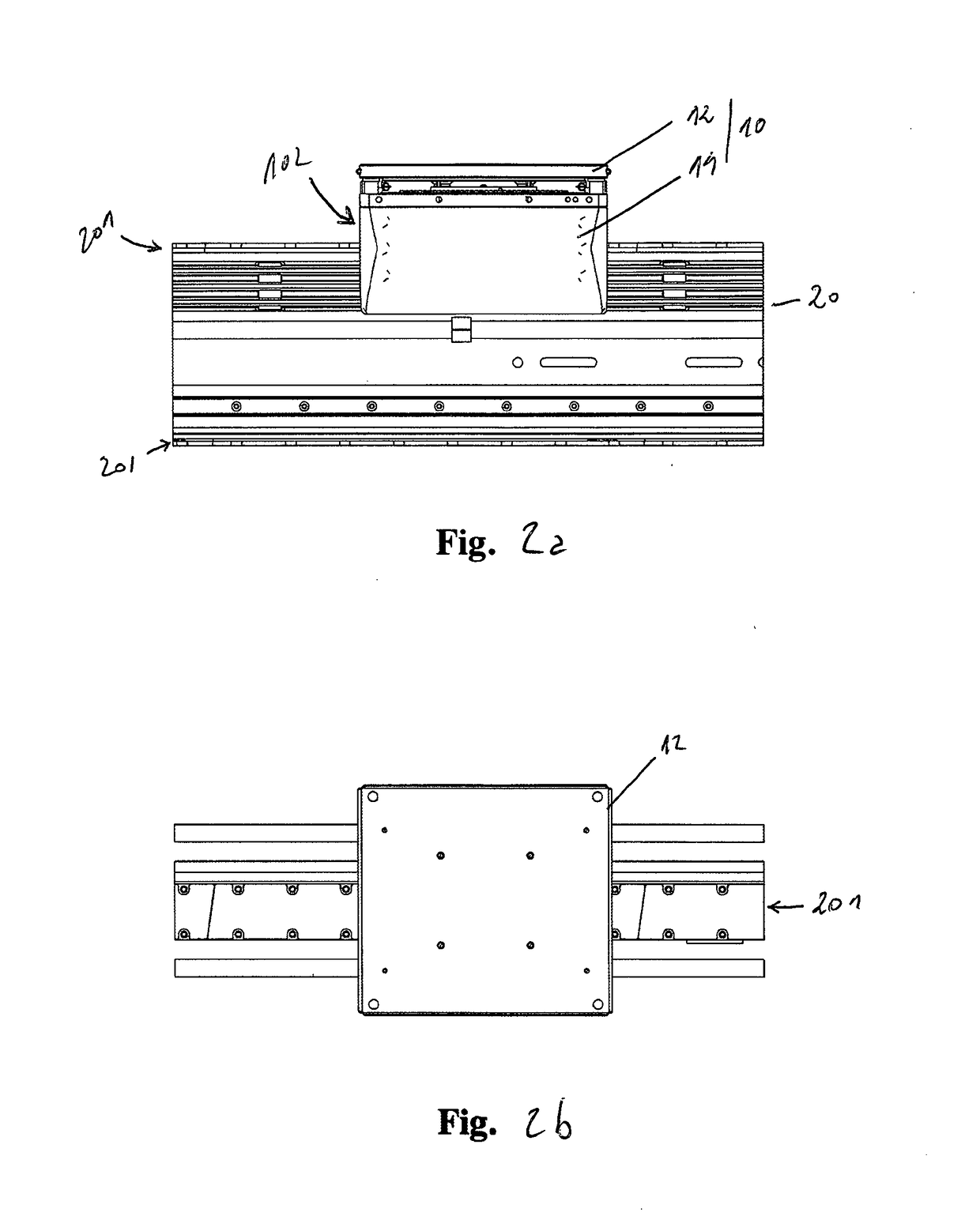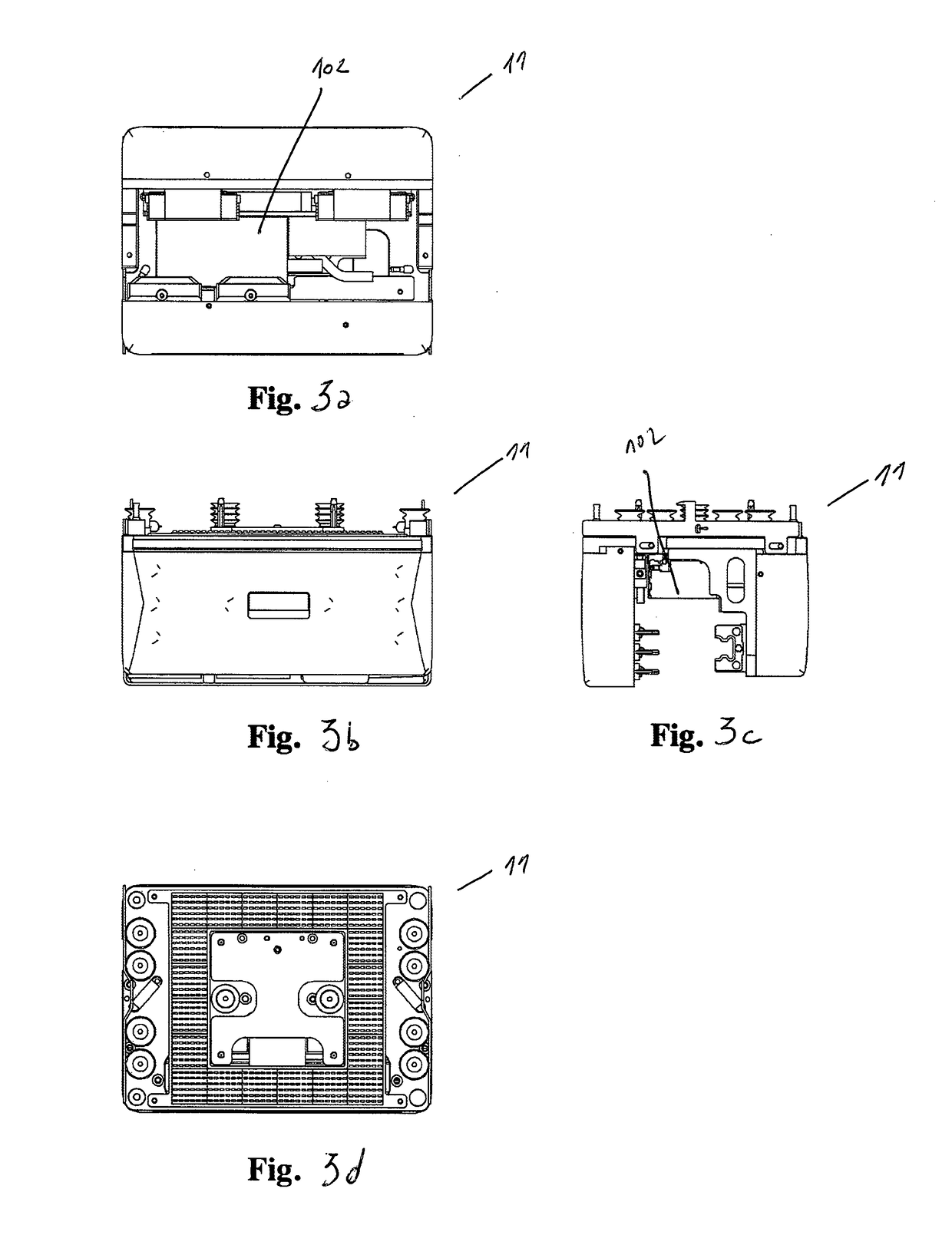First of all, in the known silk-screen printing solutions we have observed the serious problem of serial
contamination; in more detail, in all the systems for large production volumes in which the movement of the cells or wafers occurs on belts, rollers, pilgrim process conveyor belts, rotary tables or similar conventional handling means, in case of any
contamination thereof and particularly in case of breaking, spilling, loss or leakage of inks and / or pastes in the printing phase, said
contamination often affects the whole flow of transported and inevitably dirtied cells.
Such a phenomenon is translated into serious problems of quality, waste, plant
downtime, removal of parts, cleaning, which inevitably negatively affect global productivity.
Secondly, in the known solutions we have observed a low printing quality due to insufficient stability and / or rigidity of the support element on which the
wafer is printed, with respect to the printhead, also with poor
repeatability of the positioning.
For example, in D1 the transfer and the printing are carried out by laying the
cell on supports of the partial type, that is to say, incomplete in the support, because it is necessary to have a sufficient space under the
cell for the conveyor belts, which are lowered during printing and are lifted again to carry the cell away when printing has been completed; sometimes such a solution is little stable and may jeopardize the final quality of the silk-screen deposition.
Furthermore, in the many solutions providing a rotary table with a reference and cell laying function, as for example in D2 and D3, sometimes we have observed a relevant projection or range between the rotation fulcrum of the table itself and the printhead; such a solution provides great
structural rigidity, with consequent oversizing of the construction elements, thus increasing the inertias of the movements with greater slowness in the translations, that is to say, preventing rapid movements; furthermore, sometimes in these solutions the integration of means for holding and / or translating the pieces is problematic.
Moreover, the solutions with the rotary table have the known problem related to the variable offsets, which is particularly relevant in case of precision positioning, that is to say, micrometric positioning, as it occurs in silk-screen printing on photovoltaic cells.
Therefore, it is evident that said rotary tables, in order to be effective and ensure high quality and
repeatability, must provide oversized and preloaded bearings for the purpose of maintaining the correct position at every partial rotation, without clearances, therefore being expensive and of difficult maintenance.
Thirdly, the solutions in which the silk-screen printing occurs directly on shuttles which translate below the printhead, as for example in D7 and particularly in D8, namely acting as a support for the printing of the cells or wafers, may solve said problems of precision and repeatability but, however, they are not suitable to solve the serious problem of plant
downtime, in the frequent cases of breaking or contamination as stated above, there being no intermediate support of the removable type like an automatically interchangeable tray.
Fourthly, in general it has been observed that the known and conventional solutions intended to improve said printing
on cells or wafers are limited to some specific aspects such as the alignment of the cells with respect to the printing matrix with external mechanical means as for example in D6, or the automatic alignment of the printing screen as for example in D5, or the control of the
interfacing between the screen and the surface of the cell or
wafer using vision systems and / or systems for
linear motor-driven axial movement systems or eccentric or
piston systems for lifting the cell, as for example in D3 or D4.
Solutions are also known in which the whole printhead translates to get aligned above the cell or
wafer, the
excessive weight, the
inertia, the cost, and the complexity of the
system being however disadvantageous.
Fifthly, as to said integrated
electromagnetic drive LSM industrial handling systems with multiple shuttles provided with on-board permanent magnets and a rail provided over its entire length with selectively supplied coils, it has also been observed that there are significant control problems and that they are also little versatile, particularly in the case of articulated configurations.
Particularly, it is known that coordination occurs depending on the position of each shuttle and also that the interaction between the coils and the single shuttle in order to ensure independent missions, that is to say, isolated with respect to the other shuttles, is difficult.
Sixthly, it has also been observed that the known and conventional integrated handling systems are very rigid, that is to say, little versatile, and particularly they are not suitable for articulated configurations like lines of silk-screen printing
on cells or wafers; in fact, the operators of the sector know that the making of the rails with selectively supplied coils is complex and expensive in case of small-sized shuttles with precision positioning.
In particular, the difficulties of operation in curve are significant since the positioning of the coils with respect to said shuttles is problematic; therefore, such systems allow for limited and simple paths.
Nowadays, in the modern
continuous production industrial lines there are large production volumes with many automated workstations having different functions; in these cases, due to all the above-mentioned disadvantages, a similar
handling system is little flexible and constraining, it being difficult to make complex and variable paths with rail switches as well.
Furthermore, it has been observed that said integrated solutions occupy wide spaces and also provide a considerable increase in the space used by every new adopted apparatus; moreover, it is known that such solutions generally imply high investment and maintenance costs.
Furthermore, it has also been observed that said industrial handling systems with independent shuttles on a passive rail, of the self-powered type by means of incorporated accumulators, feature particularly complex and expensive shuttles, difficult to be coordinated, with a high level of wear and defectiveness and also not easy to be reloaded; such shuttles, moreover, feature inertias and heavy weights, such parameters being fundamental for the duration and the performance of the whole
handling system.
It has also been observed that the above-described
system generally implies high consumption and low energy efficiency.
Therefore, these disadvantages make such a
system mainly suitable for the transfer of materials in the
assembly lines or for storage, being however little suitable for the automated, consequential and asynchronous precision
processing of small-sized semi-finished products as for example occurs in the case of photovoltaic cells and circuit boards.
It has also been observed that said LSM moving coils drive solutions, that is to say, with permanent magnets on a rail and coils on the shuttle, are extremely reliable and precise in positioning but, however, they are of easy implementation only in the case of simple configurations, substantially of the isolated type wherein the rail is short and rectilinear and wherein one single shuttle or at most a homogeneous group of synchronized shuttles slides; such configurations are of difficult implementation where the path is long or articulated, or where multiple shuttles must simultaneously carry out missions which are independent but coordinated and interacting with each other.
In more detail as to the control systems, it has also been observed that in said LSM isolated or moving coils configurations there is no need to integrate complex sensors, and the
processing of information is substantially limited as well; on the other hand, it has been observed that the control solutions of conventional use are not suitable in case of complex LSM drive applications, that is to say, in the integrated industrial handling systems in which multiple shuttles simultaneously perform, on the same rail, missions which are diversified with respect to each other and particularly if they interact in an independent but coordinated way.
Moreover, it has been observed that said shuttle of the moving coils type is generally connected via cable in such a way as to correctly supply power to said coils and simultaneously check feedback; however, said cable is an obstacle in complex applications, it is a serious limitation on maximum accelerations and is often a cause of breaking or malfunction, as well as being expensive.
Finally, it has been observed that the known solutions, in particular, do not allow to realize an evolved handling and silk-screen printing system with adjustable and adaptable positioning of the single cell or wafer with respect to the screen, completely integrated along a rail, with high efficiency and productivity, modular, versatile, clean, safe and cost-effective; in particular, the known solutions do not provide that each cell is individually mounted from the beginning to the end of the path on a smart shuttle, namely independent but coordinated and provided with an equipped tray for the purpose of translation and printing, in such a way as to ensure: complete movement autonomy with the absolute and precise control of its own positioning and of the positioning of the cell, automatic loading and unloading, automatic alignment and inclination of the cell also during the passage of the doctor blade, automatic release of the tray with controlled and adjustable lifting of the cell in correspondence of the workstations placed along the path, automatic coordination between the shuttles and the different operating phases, complete electronic management of each shuttle and of the whole system, automatic
quality control, automatic safety systems.
Furthermore, it has been observed that said systems intended to improve the
interfacing between the fixed matrix or printing screen and the surface of the cell by lifting, are difficult to be adapted to the particular conditions of the printhead, for example a more precise and adaptable control of the printing support, in particular of its inclination, being desirable.
 Login to View More
Login to View More  Login to View More
Login to View More 


